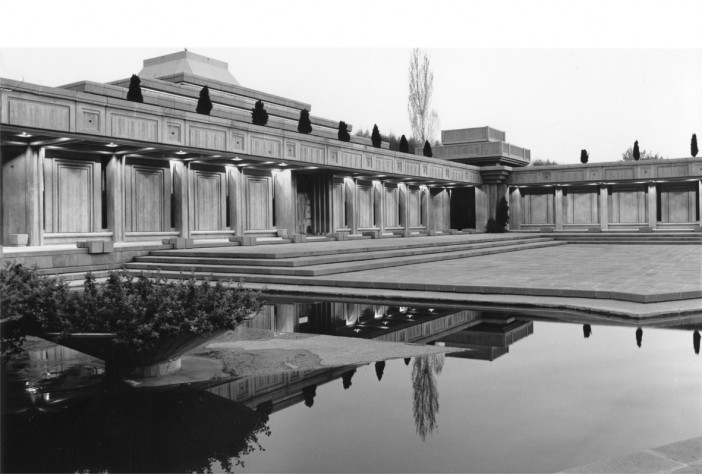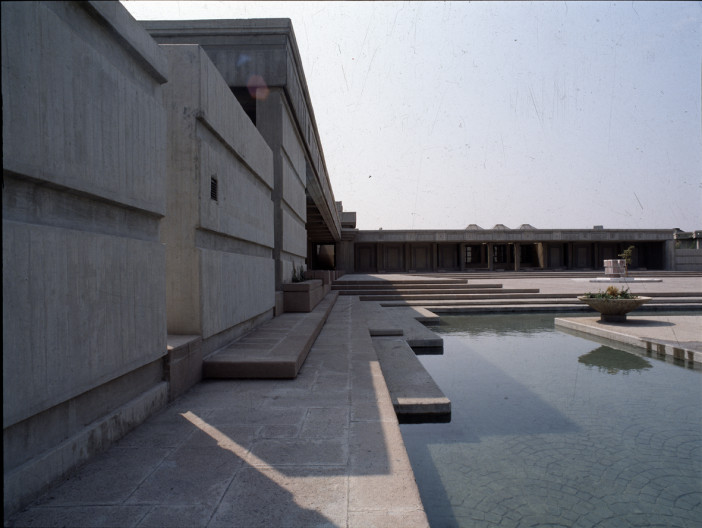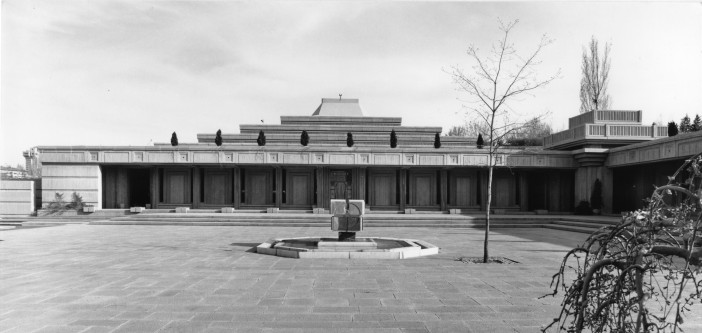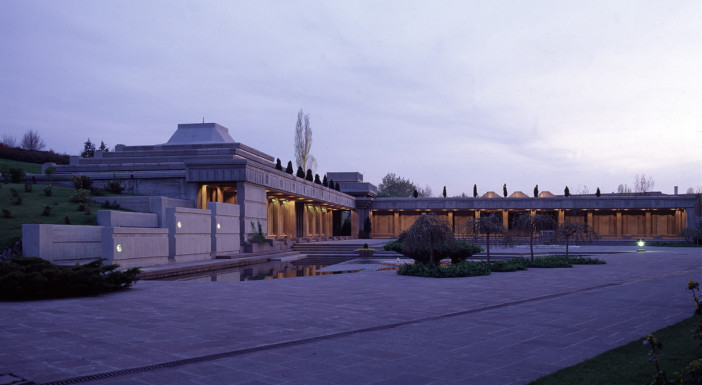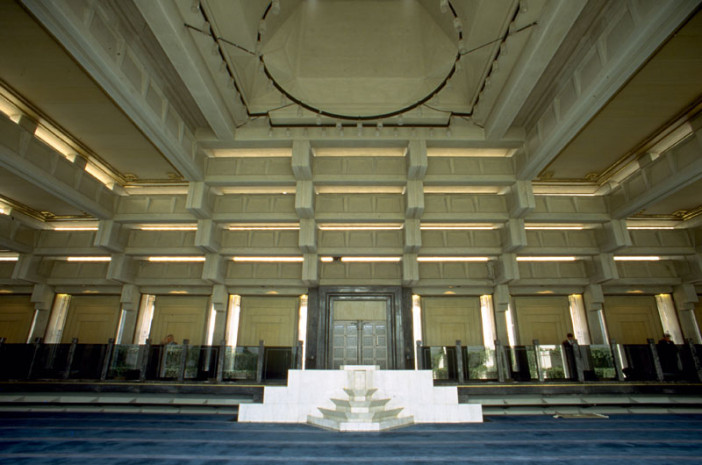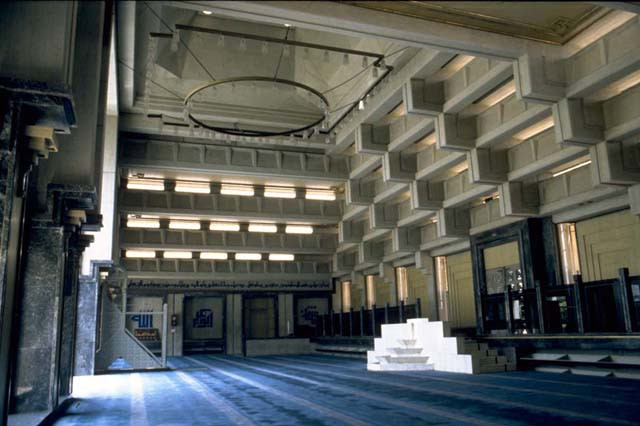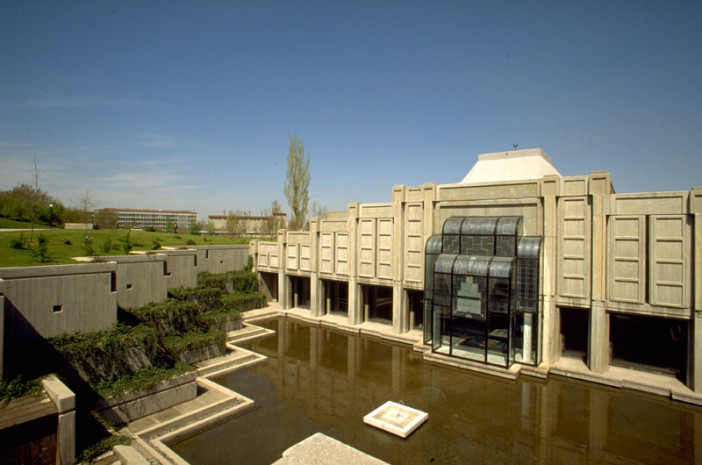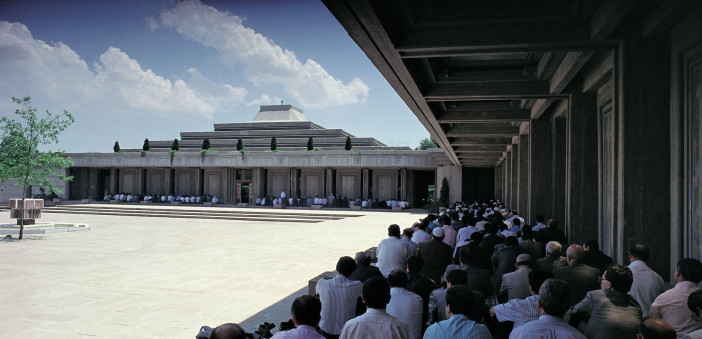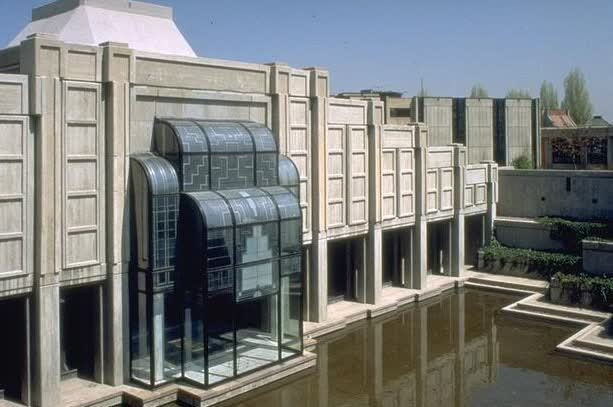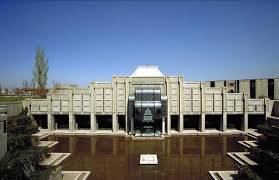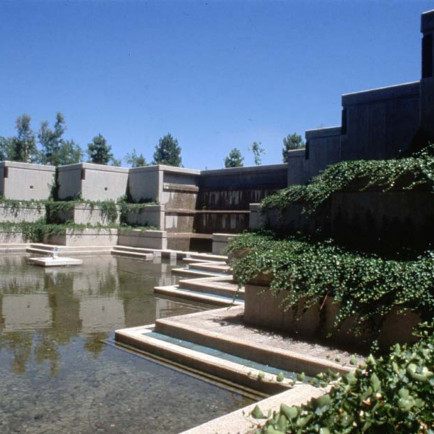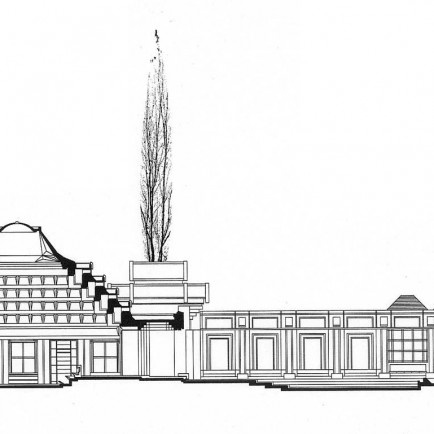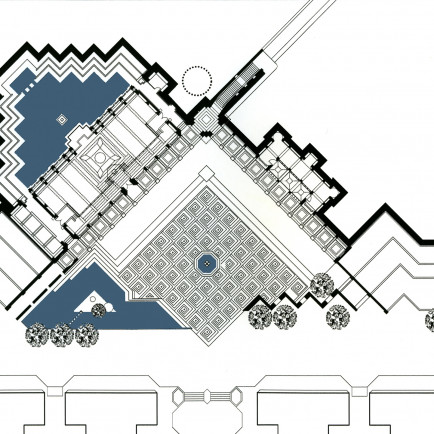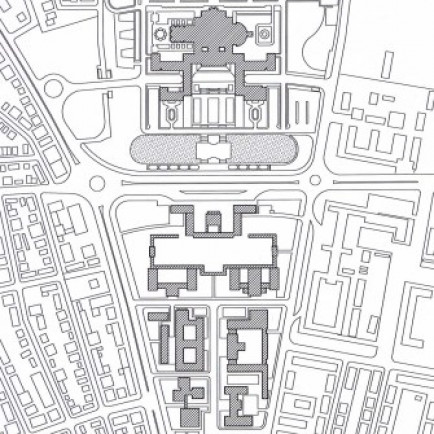Mosque of the Grand National Assembly
History
The mosque of the Turkish National Assembly in Ankara, completed in 1989, is
located at the Southern edge Of the group Of buildings which make up the
Turkish National Assembly complex in Ankara. The mosque is located to the South
of the Public Relations buildings of the complex. It is intended for the
members of the National Assembly and the staff working in the complex. The
building consists Of a prayer hall, an ablutions area. an imam 's room. and a
library for religious publications
Ankara. the capital of Turkey. has grown during the past seven from a small town Of less than 30.000 when the Turkish republic founded in 1923 into a large Metropolis of over three million people The choice Of what was urn the small central Anatolian town of Ankara as the capital Of the newly establish Turkish republic to replace the old cosmopolitan capital Of Istanbul was a conscious expression Of the rupture that the Republic had intended to create with Turkey' s Ottoman past.
Description
The Mosque, a low key structure which deliberately avoids the monumentalism of the National Assembly Complex it is located, moves beyond conventional mosque architecture and points towards new direction in layout and design. Much of the mosque complex is hidden within the slope of the site, only parts of it rising above the surrounding landscape. This horizontal quality is reinforced by a fragmentary, abstract treatment of the conventional vocabulary. The minaret is represented by balconies and a cypress tree; the dome is replaced by a terraced pyramid which gives the impression of growing out the landscape.
The mosque also incorporates completely new spatial arrangements, including a glass qibla wall and mihrab.The view is onto a sunken, terraced garden. This mosque eschews dependence upon the architectural conventions of the past; it defies religious space through the treatment of form, space and light and the relationships of landscape and building. Architects have made a powerful statement about new symbolic possibilities and design alternatives for the mosque in contemporary world.
For having the boldness and courage to experiment with a different architectural treatment for mosque, this building was awarded by 1995 Aga Khan Award for Architecture. From its incorporation in the site, to the transparent qibla wall, to the absence of domes and formal minaret, this mosque challenges the conventional and opens the door to freeing up designers' imaginations everywhere.
References
Aga Khan Trust for Culture
architizer
Details
Location
Devlet Mahallesi, 06420 چانکایا، انقرہ/صوبہ انقرہ، تركيا
Owners
Turkish Grand National Assembly
Architect Name
Year of Build
1989
Area
950
Drawings
Map
History
The mosque of the Turkish National Assembly in Ankara, completed in 1989, is
located at the Southern edge Of the group Of buildings which make up the
Turkish National Assembly complex in Ankara. The mosque is located to the South
of the Public Relations buildings of the complex. It is intended for the
members of the National Assembly and the staff working in the complex. The
building consists Of a prayer hall, an ablutions area. an imam 's room. and a
library for religious publications
Ankara. the capital of Turkey. has grown during the past seven from a small town Of less than 30.000 when the Turkish republic founded in 1923 into a large Metropolis of over three million people The choice Of what was urn the small central Anatolian town of Ankara as the capital Of the newly establish Turkish republic to replace the old cosmopolitan capital Of Istanbul was a conscious expression Of the rupture that the Republic had intended to create with Turkey' s Ottoman past.
Description
The Mosque, a low key structure which deliberately avoids the monumentalism of the National Assembly Complex it is located, moves beyond conventional mosque architecture and points towards new direction in layout and design. Much of the mosque complex is hidden within the slope of the site, only parts of it rising above the surrounding landscape. This horizontal quality is reinforced by a fragmentary, abstract treatment of the conventional vocabulary. The minaret is represented by balconies and a cypress tree; the dome is replaced by a terraced pyramid which gives the impression of growing out the landscape.
The mosque also incorporates completely new spatial arrangements, including a glass qibla wall and mihrab.The view is onto a sunken, terraced garden. This mosque eschews dependence upon the architectural conventions of the past; it defies religious space through the treatment of form, space and light and the relationships of landscape and building. Architects have made a powerful statement about new symbolic possibilities and design alternatives for the mosque in contemporary world.
For having the boldness and courage to experiment with a different architectural treatment for mosque, this building was awarded by 1995 Aga Khan Award for Architecture. From its incorporation in the site, to the transparent qibla wall, to the absence of domes and formal minaret, this mosque challenges the conventional and opens the door to freeing up designers' imaginations everywhere.


